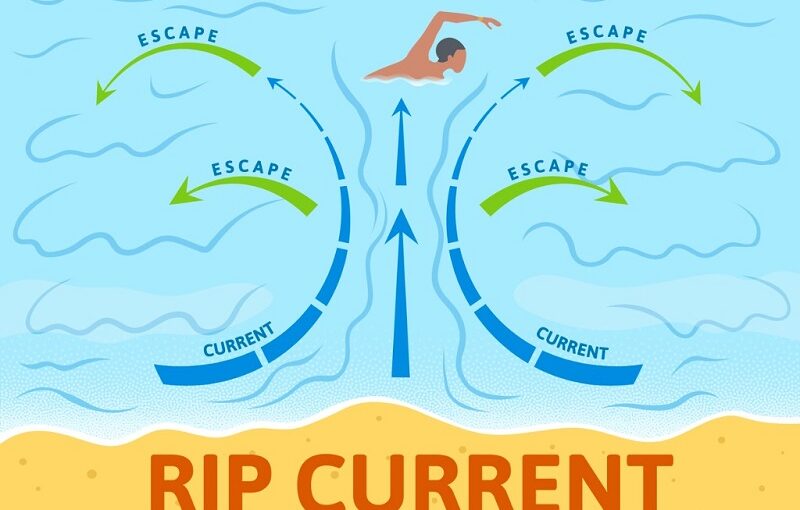Escaping Rip Currents
When you play or swim in the ocean (or any large body of water with breaking waves), you always have to be on the lookout for escaping rip currents. Every year, 100 people drown in rip currents. Another 30,000 people are rescued by lifeguards from rip currents every year. So, what is a rip current, how do you recognize one, and how do you escape a rip current?
What is a Rip Current?
A rip current is a narrow, fast-moving channel of water that starts near the shore and extends offshore or out to sea. Rip currents can occur at any beach with breaking waves, including Great Lakes beaches. Rip currents are particularly dangerous because they can sweep even the strongest swimmer out to sea.
How to Recognize a Rip Current
There are a few things you can look for to help you identify a rip current:
- A rip current may look like a river of water flowing quickly away from the shore. It will be much narrower than nearby wave channels.
- Rip currents often break up wave crests as they flow offshore.
- The surface of water above a rip current may look flat or “choppy” while the water around it appears to be breaking in uniform lines.
- Rip currents can move quickly through the surf zone and pull objects or people away from shore.
How to Escape a Rip Current
If you find yourself caught in a rip current, the best thing to do is stay calm and try not to panic. It is important to remember that rip currents are narrow channels of water that flow quickly out to sea. Rip currents do not pull people under the water, they simply carry them away from shore.
The most important thing to do if you are caught in a rip current is not to fight against the current. Trying to swim directly back to shore will only exhaust you and make it more difficult to escape the rip current. Instead, try to swim parallel to the shoreline until you can escape the current. Once you are free of the rip current, you can then swim back to shore. If you are unable to swim parallel to the shoreline, then signal for help and float or tread water until someone comes to your rescue.
Rip currents can be very dangerous, but by following these simple steps, you can increase your chances of escaping one safely. A few more safety pointers for rip currents include never swimming alone and never swimming if you’ve been drinking alcohol. Stay safe out there!


